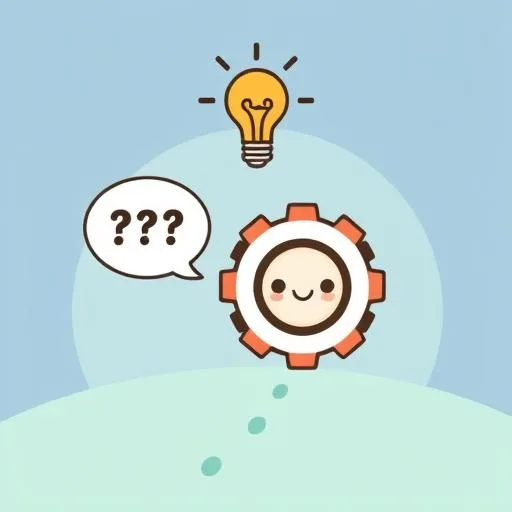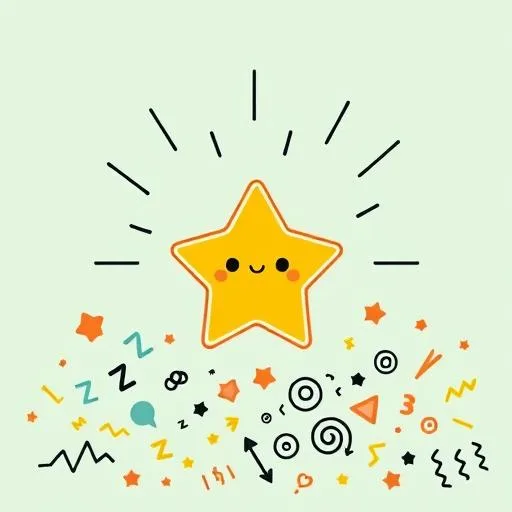
The other day, my daughter was building a castle with magnetic tiles. It wasn’t perfect—one tower was leaning, the drawbridge led into a wall. But it was entirely hers. Every quirky choice was a signature of her seven-year-old imagination. It got me thinking about the ‘human signature’ in creation. And then I stumbled upon a review of AI tool Pangram, designed to spot work lacking that signature. These digital detectives are clumsy—missing the nuance of human-machine collaboration.
Why Are AI Detectors Like Pangram Inaccurate?
So, this writer for CNET decided to put Pangram to the test. When they fed it a piece written entirely by ChatGPT, the tool screamed, “AI!” with 99.9% certainty. Okay, impressive! But here’s where it gets fascinating. The author then tested their own, human-written work, where they had used AI simply as an assistant to sort through some quotes. BAM! The detector flagged those perfectly human sections as potentially AI-generated. It couldn’t tell the difference between a tool being used to help and a tool doing all the work. It completely missed the nuance!
It’s like if I saw my daughter’s finished castle and, because I helped her reach the highest tile, I declared the whole thing was ‘Dad-built.’ That would be ridiculous, right? It would totally miss her vision, her effort, and the sheer joy she had in creating it. These AI detectors are doing the same thing. They see a digital fingerprint and jump to a conclusion, missing the bigger, more important picture of human-machine collaboration. They’re built for a black-and-white world, but our kids are growing up in a world painted in every shade of gray.
The Problem with AI Detection Tools for Kids’ Work?
Here’s the part that really gives me pause. It’s not just one tool that’s a bit off. Study after study is showing that these AI detectors are, frankly, not very reliable. We’re talking about a serious problem with false positives (flagging human work as AI) and false negatives (missing actual AI work). Even OpenAI, the company behind ChatGPT, has admitted that these tools don’t really work well. Let that sink in! The creators of the very thing these tools are meant to detect are waving a giant red flag.
And it gets worse. Research has shown some detectors are biased against non-native English speakers, their writing styles more likely to be misidentified as AI-generated. It’s shocking. Imagine our kids, pouring their hearts into a school project, only to be wrongly accused by a faulty algorithm. The potential damage to their confidence and their love of learning is just heartbreaking to think about. It’s like being told your unique accent is ‘wrong.’ It discourages the very thing we want to encourage: their authentic voice. We can’t build a system of trust with our kids on a foundation of flawed, biased technology. It’s just not the way.
How Can We Cultivate Kids’ Unmistakably Human Spark?

Okay, so if playing ‘gotcha’ with AI detectors is a losing game, what’s the winning move? It’s SO simple and so powerful: we shift our focus from policing to celebrating. Instead of scrutinizing the final product for authenticity, let’s get wildly excited about the *process* of creation! Let’s champion the messy, the imperfect, the wonderfully human.
What does this look like? It’s celebrating the story your kid writes, even if the plot makes no sense. It’s hanging up the drawing where the family dog is purple and has six legs. It’s listening to the song they made up, complete with silly lyrics and an off-key melody. This is the stuff of childhood! This is the raw material of creativity. An AI can generate a technically perfect story, but it can’t invent a giggle-powered spaceship fueled by apple juice. That’s a human-kid masterpiece!
Here’s a little game we’ve been playing that has been an absolute blast. We call it ‘Story Soup.’ We each throw a random word into a bowl—say, ‘waffle,’ ‘dragon,’ and ‘slippers.’ Then, we take turns adding one sentence at a time to build the wackiest story imaginable. The results are always chaotic, hilarious, and 100% human. It’s a beautiful reminder that the most amazing creations come from connection and joy, not code.
How Can We Guide Kids Instead of Guarding Against AI?

This all brings us to our most important job: being our kids’ guides in this new world, not their guards. Our role isn’t to stand at the gate with an AI detector, demanding they prove their work is their own. Our role is to walk alongside them, marvel at what they’re building, and ask questions that deepen their thinking and their connection to their own work.
Instead of asking, “Did you write this all by yourself?” what if we asked, “What was your favorite part to create?” or “What made you choose that word?” These questions open up conversations. They show our kids that we value their thoughts, their choices, and their effort far more than a flawless final product. This is how we build resilient, confident creators who know the value of their own voice.
And when it comes to technology, we can teach them to see it as a helpful, but junior, partner. It can be a fantastic brainstorming buddy, a dictionary that never gets tired, or a tool to organize their thoughts—just like the author in the CNET article used it. But the heart, the soul, the big ideas? Oh, that’s all them. By modeling this balanced approach, we’re not just teaching them to write or draw; we’re teaching them how to think critically and use powerful tools with wisdom and integrity.
How Can Kids’ Human Spark Outshine Any AI Algorithm?

At the end of the day, this whole conversation around AI detection feels like it’s missing the point. We’re so worried about what’s fake that we’re risking devaluing what’s real. The real magic isn’t in a perfectly polished essay; it’s in the messy, joyful, and sometimes nonsensical process of a young mind learning to express itself.
Let’s not get caught up in the fear. Let’s get caught up in the wonder. The future isn’t about raising kids who can pass an AI detector test. It’s about raising kids who are so in love with their own curiosity, so confident in their own unique voice, and so passionate about their ideas that their human spark shines too brightly for any algorithm to question. That’s a future that feels incredibly bright, hopeful, and exciting. And it’s a future we get to build together, one lopsided castle and purple dog at a time.
Source: I Tried Using AI to Uncover AI-Written Work. I Don’t Know if I’m Sold, CNET, 2025/09/08 11:44:02
